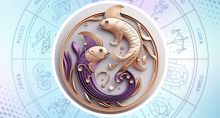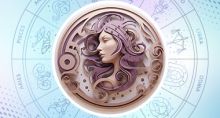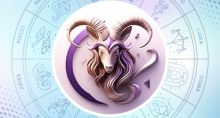Offer Durva Grass to God And Gain Good Fortune Quickly
Durva grass is a sacred plant for Hindus in India.
It is one of the important and popular offerings to Ganesha, the Hindu deity. It originated in the Middle East and grows abundantly in Bermuda as an invasive species. It is also known as Doob grass, Bermuda or Bahama grass, and crabgrass.
The word ‘Durva’ comes from 2 words, ‘duhu’ and ‘avam’. The former means ‘that which is far away’, while ‘avam’ means ‘that which brings closer’. Devotees believe that Durva grass has the power to bring them closer to Ganesha. Ganesh Pooja is incomplete if it does not include an offering of Durva grass, which is very dear to him. Durva also means 'that which is cut or eaten by animals'.
Durva grass has 3 blades that symbolize the 3 principles of primal Shiva, primal Shakti, and primal Ganesha. Durva supposedly has the greatest ability to attract the Ganesha principle. So, it is an important offering to Ganesha.

Durva grass has 3 tastes - sweet, astringent, and bitter. It is a wonderful body coolant and reduces Pitta and Kapha Doshas. It can also purify the blood. Durva grass has healing properties. It contains calcium, protein, vitamins A and C, and other nutrients. In Ayurveda, it is used to treat conditions like acidity, obesity, bleeding gums, fever, inflammation, respiratory issues, etc., and to boost immunity. Consuming Durva grass juice boosts digestion, too.
Hindus offer Durva grass to their deities during Poojas and other religious ceremonies. Durva grass symbolizes prosperity and good fortune. Hindu mythology claims that Durva grass was born from the tears of Ganesha. Hence, offering Durva grass to Ganesha brings good fortune and prosperity.
Durva grass has purifying properties. It absorbs negative energy and purifies the environment. Offering Durva grass to the deities cleanses the devotee’s aura and creates a positive environment.
Offering Durva grass to God is also a form of devotion and surrender. Durva is a simple offering as it is only a blade of grass. By offering it, devotees express their gratitude and reverence toward God.
But this simple act of devotion brings immense blessings. It attracts good fortune, boosts health, purifies the environment, and promotes faith.
There are many reasons for offering Durva grass to Ganesha. Let us discover some of them.
What the Puranas Say
Once there was a celestial singer who wanted Ganesha to marry her. She disturbed him when he was in meditation. But Ganesha did not accept her proposal of marriage. The angry maiden cursed Him. Due to this, he experienced a burning sensation in his head. So he kept some Durva grass on his head to reduce the heat. Since then, people started offering Durva grass to him.
Spiritual Reasons for Using Durva
One of the main aims of ritualistic worship is to enhance the divinity in the idol that we worship so that it benefits us at the level of Chaitanya (Divine consciousness). Hence, we should offer substances that attract the maximum amount of the God Principle. Durva grass has the maximum capacity to attract Ganesh Principle or Tattva.
Things to Remember When Offering Durva to Ganesha
The Durva grass should be tender. The Durva stalks that one offers must have leaves in odd numbers -3, 5, 7, etc.
Earlier, the Ganesha idol would be around one meter in height. So the Durva offered was as long as the samidha (Sacrificial firewood). If the idol is of the same height as the sacrificial firewood, the Durva can be of shorter length. But, even if the idol is large, the Durva should be as long as the firewood. One should tie the Durva stalks together like the sacrificial firewood. This helps preserve its fragrance for a longer time. People soak it in water so that it remains fresh for a longer period and then offer it. These factors help to preserve the pavitraks of Ganesha in the idol for a longer period.
Odd numbers are usually associated with the Shakti/Divine Energy Principle. Hence, people offer Durva in odd numbers (3, 5, 7, 21, etc.). This helps the entry of Shakti into the idol in a greater proportion. Usually, people offer 21 shoots of Durva to Ganesha. In Numerology, 21 is 2 + 1 = 3. The number 3 is linked to Ganesha and represents Creation, Sustenance, and Dissolution. So, one can destroy the 360 (Raja-Tama) waves with its energy. If we offer Durva in even numbers, more and more of the 360 waves will be attracted first, and later the 108 (Sattva) waves too.
How to Offer Durva Grass?
Cover the entire Ganesha idol, excluding the face, with the Durva grass. This ensures that its fragrance will spread all around the idol. As the Durva grass covers the idol, the fragrance takes the form of the idol and helps to attract pavitraks of Ganesha to this form. This is described as the acquisition of similar qualities by the idol or the awakening of the idol. The idol is then consecrated (Pranapratishṭha) to prevent the pavitraks that have entered it from escaping. The pavitraks will remain in a high proportion as long as the fragrance remains. To retain them there, we should change the Durva grass thrice a day. So, Pooja is performed thrice daily.
It is believed that the Divine Principle resides at the root of the Durva grass, where the Ganesh Tattva is created and is conserved in the stem’s void. It is then released into the environment. The devotee thus gains vital energy from the Durva. A bundle of 21 Durvas can attract the pavitraks from the universe, and they are received by the worshipper.




















